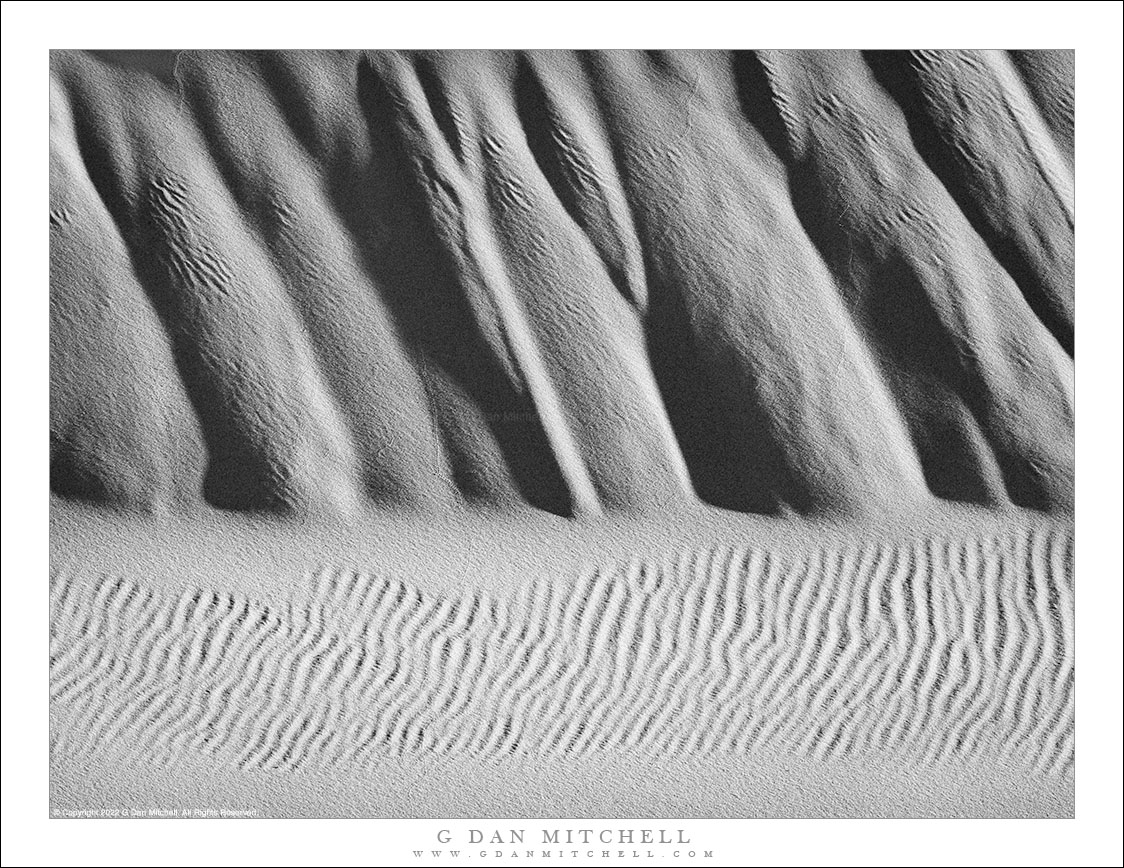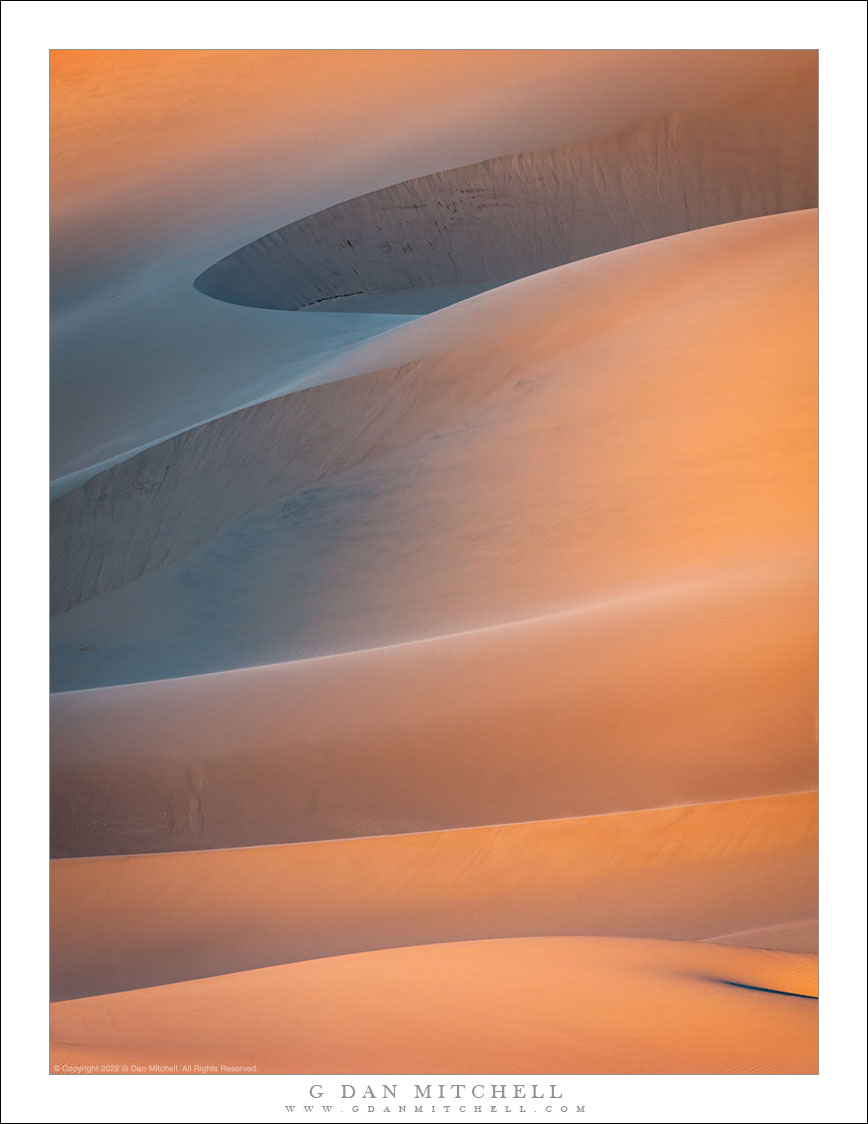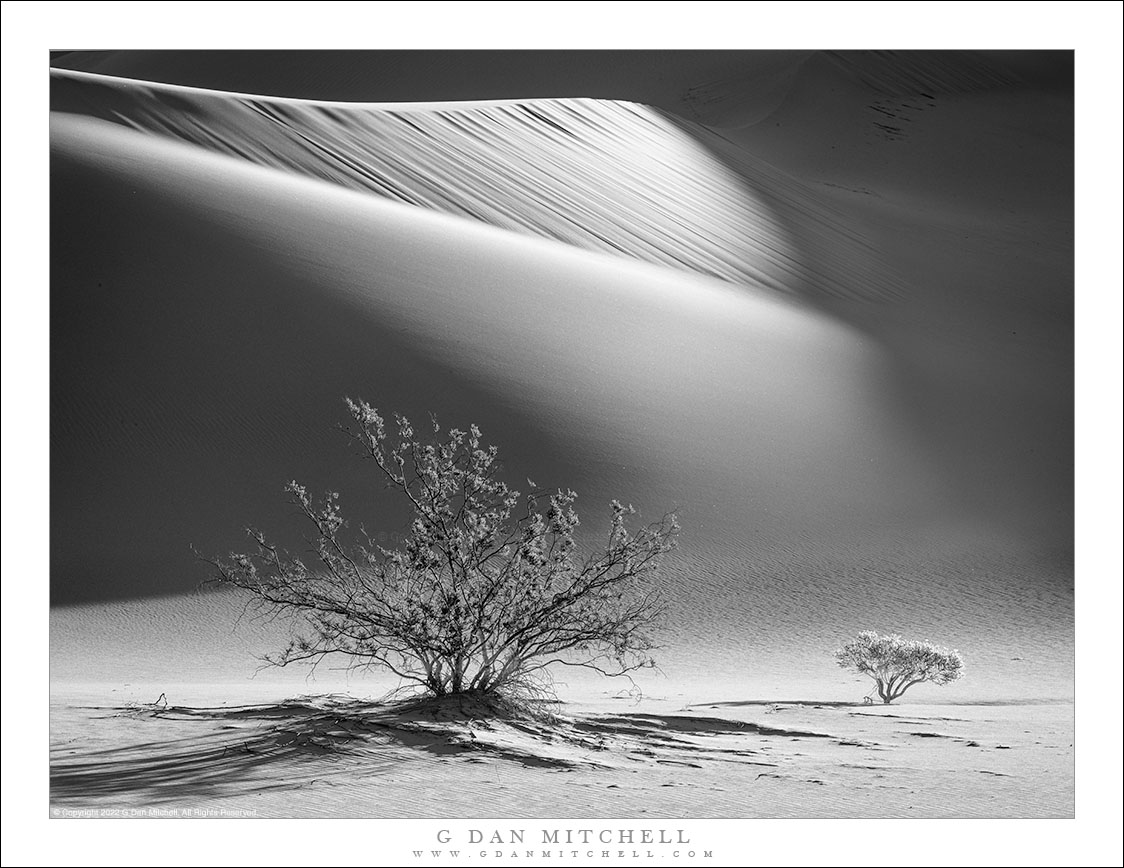
Last Light, Sand Dunes. © Copyright 2022 G Dan Mitchell – all rights reserved.
Desert winds blow sand across the lip of sand dunes in sunset light.
Some things are only at their best for a brief moment. Think of a fresh espresso, a soufflé, or perhaps the half hour of beautiful spring snow between ice and slush. The light in the moment when shadows from distant hills arrive at the edge of sunset light (or its inversion at sunrise) is another such thing. This light does things to the landscape that aren’t seen at any other time of day, but the event may last barely a few minutes.
Near the end of my shoot at this location I turned and saw the colorful, low-angle light coloring the sand and bringing relief to its features. I quickly went to work photographing it, working quickly and instinctively, as I knew that the moment would be brief. In fact, along the left side of this photograph is the the shadow marking the edge of light. A moment after I made this photograph, the light was gone.
G Dan Mitchell is a California photographer and visual opportunist. His book, “California’s Fall Color: A Photographer’s Guide to Autumn in the Sierra” is available from Heyday Books, Amazon, and directly from G Dan Mitchell.
Blog | About | Flickr | Facebook | Email
Links to Articles, Sales and Licensing, my Sierra Nevada Fall Color book, Contact Information.
Scroll down to leave a comment or question. (Click this post’s title first if you are viewing on the home page.)
All media © Copyright G Dan Mitchell and others as indicated. Any use requires advance permission from G Dan Mitchell.



